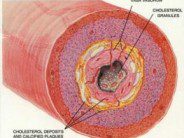Autism is a developmental disorder that is characterized by delayed communication, impaired social interactions, restricted affect, and repetitive behaviors. There appears to be a genetic component because the disorder has a familial predisposition and can be passed along from one generation to the next. Some have argued for an environmental component as well. For the diagnosis to be made, the key characteristics need to be present before the age of three. Although, in some children the characteristic features become manifest at or before the age of 2 years old. Early diagnosis is important for long term outcomes, because the earlier that the treatment is begun the more likely that it will have a positive and beneficial effect. Researchers, lead by Dr. Mark Johnson, have found that they can detect brain activity in infants as young as 6 months of age that was helpful in predicting which infants would go on to develop autism by the age of 3 years old. The results of the study were published in the journal Current Biology. The investigators used a prospective longitudinal study of 104 infants. Fifty-four (54) were at risk for developing autism due to a familial predisposition, and the other fifty (50) were used as controls. At 6-10 months, the researchers measured event related potentials (ERPs), or brain activity, in the infants when presented with pictures of faces with eyes directed toward the infant or directed away from the infant. The researchers found that in the infants who would later go on to develop autism, the brain activity at six months when recorded with eye gaze directed toward the infant was predictive of future development of autism at 36 months. The authors wrote, “our findings potentially allow for the early identification of those infant siblings who are at highest risk for developing later impairments, paving the way for the more selective targeting of early intervention efforts and procedures. In the future, more reliable diagnostic and, more importantly, prognostic indicators of the condition may become clear through a better understanding of the way in which very early differences in the brain functioning of infants at risk relate to variable developmental pathways”. The findings of this study are important because they identify a possible method for the early detection of autism in children who will later develop the disorder. The earlier the diagnosis is made and treatment started, the more likely it is to have a beneficial impact on the development of the child.
Reference:
Elsabbagh M, Mercure E, Hudry K, et al. “Infant neural sensitivity to dynamic eye gaze is associated with later emerging autism” Current Biology 2012; 22:1-5.










 DrSamGirgis.com is a blog about medicine, nutrition, health, wellness, and breaking medical news. At DrSamGirgis.com, the goal is to provide a forum for discussion on health and wellness topics and to provide the latest medical research findings and breaking medical news commentary.
DrSamGirgis.com is a blog about medicine, nutrition, health, wellness, and breaking medical news. At DrSamGirgis.com, the goal is to provide a forum for discussion on health and wellness topics and to provide the latest medical research findings and breaking medical news commentary.
{ 0 comments… add one now }